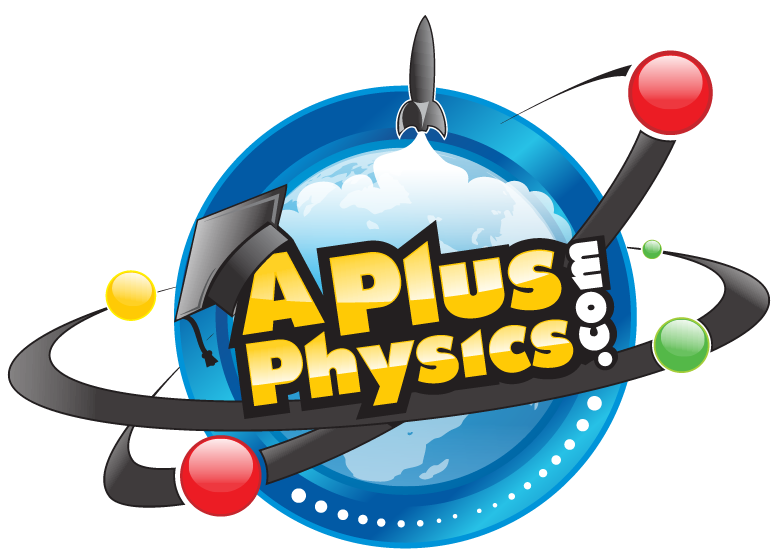Search the Community
Showing results for tags 'SBG'.
-

Regents Physics Exam Prep Resources #physicsed #regents #physics
FizziksGuy posted a blog entry in Physics in Flux
As we close in on the end of our year in high school physics, I thought it’d be helpful to myself (and perhaps to others) to put together a compendium of some of the best Regents/Honors Physics resources to assist students in preparing for their final exams. Without further ado, and in no particular order: APlusPhysics: Dan Fullerton’s (my) site to assist students and educators specifically around the NY Regents Physics curriculum, which has been expanding and generalizing to curricula outside the state as well. The Regents Physics section of the site, however, is by far the strongest and most complete. This site includes online tutorials covering the entire Regents Physics course, interactive quizzes pulling from a database of hundreds of old Regents Physics Exam questions, video tutorials of every major topic covered by the exam, and is also tied in quite closely with the Regents Physics Essentials review book. In addition, every Regents Physics questions from the past 16 exams has been pulled into worksheets by topic to allow for highly directed practice. ScienceWithMrNoon: Brendan Noon‘s physics site has a wide variety of great content, including topic-based interactive quizzes and tons of great physics videos. His course calendar, as well, is loaded with tons of great resources by topic! St. Mary’s Physics: Tony Mangiacapre‘s site, full of great lessons and interactive simulations across the entire Regents Physics curriculum. I’m especially fond of the Photoelectric Effect simulation — makes for a great computer-based lab activity! This site is also closely linked with Tony’s 123physics.com, featuring more than 1300 Regents Physics Exam questions broken down by topic for students to practice, as well as more great videos. RegentsPrep.org: The Oswego City School District (with Dr. Tom Altman) has pulled together a strong collection of resources broken into Explanations, Demos, Labs, and Quizzes to assist students and educators in preparing for the Regents Physics exam. Altman Science: The charismatic Dr. Tom Altman provides real-life demonstrations and explanations of physics concepts in action as part of the High School Physics Project. Further, he’s broken down a number of old Regents Exams and walked through solutions to each and every question in video format, page by page. In addition, his laser videos are “wicked cool” as well! Past Regents Exams: The name says it all — an amazing archive of old Regents Physics exams! Regents Physics Essentials: I’d feel negligent in my feeble attempts at self-marketing if I didn’t point out the Regents Physics Essentials review book I put together at student urging a few years back. There are a number of great review books to help students get ready for the exam, but this book takes a slightly different twist by providing students a straightforward, clear explanation of the fundamental concepts and more than 500 sample questions with fully-worked out solutions directly integrated in the text. As stated by my physics teaching cohort in crime at our high school, “the best review book is the one students will actually use,” and this was written to be friendly, fun, and concise. Plus, if students/teachers want extra problems without solutions given, the worksheets are available free online! You can check out the book’s free preview on APlusPhysics or use Amazon’s “Look Inside” feature! Source -
Hello high school physics teachers! My name is Rob Pearson, and I’m director of microelectronic engineering programs at Rochester Institute of Technology. I really like what I do and I want to tell you why. I also want to tell you why I am sharing this with you. I bet you would like to see students more engaged with the concepts you teach and the math employed in your courses. I am an engineer, so I think about problem solving (applications) first and basic science second. But like any good engineer (think MacGyver, to use an outdated reference) I know that I need to be handy with tools like math and physics if I am going to do anything useful. Come to think about it, why didn’t MacGyver ever say he was an engineer? What if your student could help solve challenging problems, use math and science every day, and have a rewarding career and also make a good salary? Typical bachelor of science graduates of RIT’s microelectronic engineering program receive multiple job offers with average starting salaries in the $60-70k range. Now back to what I do as an electrical engineer. Some aspects of electrical engineering can be dry and theoretical, but I fabricate semiconductor devices — millions of them on a chip and billions of them on each silicon wafer. The process of making these “magical” semiconductor systems is intricate and uses lots of physics, optics, mechanics, chemistry, you name it. So how does this relate to your physics course? Let me give you some examples. You teach about the Lorentz force and the right-hand rule. You could use a motor winding to illustrate the usefulness but I can give you another example the mixes physics and chemistry. We introduce elements from groups III and V on the periodic table into silicon (group IV) to change the conductivity of the silicon and make our devices. One way to introduce these elements is by ion implantation. Ion implanter functionality is based on the Lorentz force. We use tunable electro-magnets to sort ions in a vacuum by mass to charge ratio and then accelerate them using a variable high-voltage (200,000 V) supply. There is plenty of physics to talk about in this tool. Another example is a micro-electro-mechanical system (MEMS) device called an accelerometer. It consists of a tiny mass on a tiny beam and when the mass is accelerated it produces a proportional electrical signal. But wait, there’s more! It’s great that I can use these basic science courses and concepts in what I do, but what I really like is communicating the exciting possibilities of what has yet to be designed and built. Look at the changes that have occurred in our phones over just the last five years! They have touch screens, accelerometers, Global Positioning Systems, maps, computers, music players, TVs, videos (3D too!)… they can be video projectors, photo albums, and gaming systems. And that’s just one of many systems that rely on semiconductor products. What will your students do if they take up a career in this challenging field? Do you remember the tricorder that Dr. McCoy had on Star Trek? That portable medical lab in one compact unit is nearing reality. Great strides are being made in the intersection of electronics, biology, and chemistry. Further miniaturization of electronics is needed to take our current sci fi tech and turn it into practical high tech. The biggest challenge I face running an undergraduate college engineering program that focuses on microelectronics and semiconductor processing is finding bright young high school students who even know that this field exists. Please help us spread the word. I hope that maybe you can encourage an interested student or two of yours to go on to study microelectronics or nanotechnology in college, and invite you to learn more about our programs and microelectronics by visiting our web page at http://www.rit.edu/kgcoe/ue/. Sincerely, Rob Pearson, PhD Director, Microelectronic Engineering Programs Rochester Institute of Technology robert.pearson@rit.edu (Please note that further information about semiconductors and microelectronics in high school can be found as part of the Semiconductor Technology Enrichment Program materials available at APlusPhysics.com. Special thanks to Dr. Rob Pearson for submitting his article as a guest post to Physics In Flux.) Source
Terms of Use
The pages of APlusPhysics.com, Physics in Action podcasts, and other online media at this site are made available as a service to physics students, instructors, and others. Their use is encouraged and is free of charge. Teachers who wish to use materials either in a classroom demonstration format or as part of an interactive activity/lesson are granted permission (and encouraged) to do so. Linking to information on this site is allowed and encouraged, but content from APlusPhysics may not be made available elsewhere on the Internet without the author's written permission.
Copyright Notice
APlusPhysics.com, Silly Beagle Productions and Physics In Action materials are copyright protected and the author restricts their use to online usage through a live internet connection. Any downloading of files to other storage devices (hard drives, web servers, school servers, CDs, etc.) with the exception of Physics In Action podcast episodes is prohibited. The use of images, text and animations in other projects (including non-profit endeavors) is also prohibited. Requests for permission to use such material on other projects may be submitted in writing to info@aplusphysics.com. Licensing of the content of APlusPhysics.com for other uses may be considered in the future.
